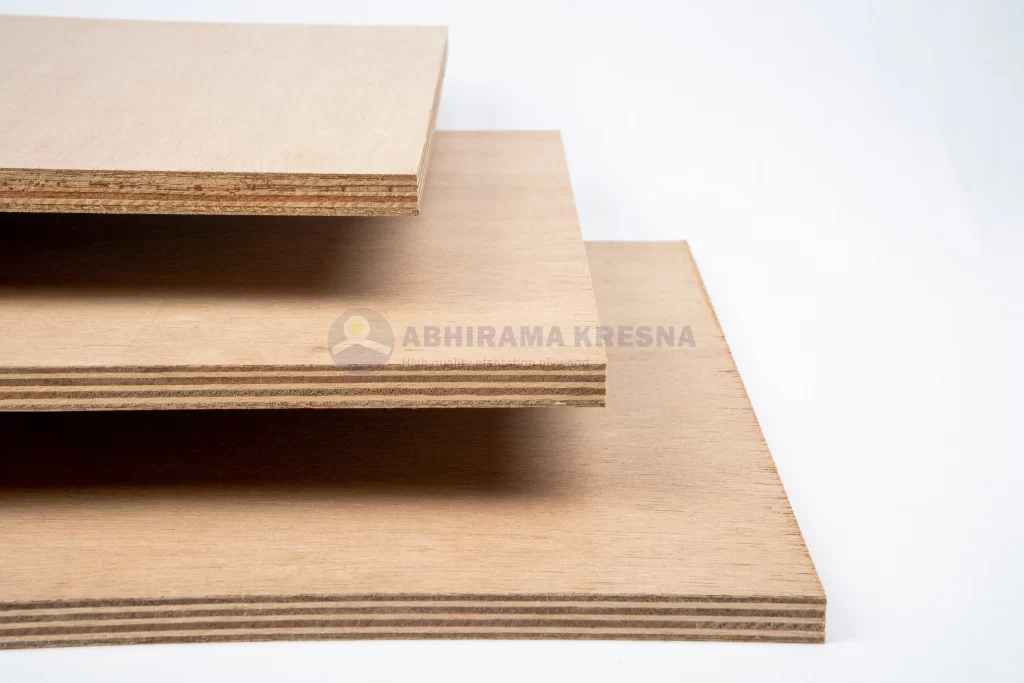Look around any modern home, construction site, or furniture workshop, and you will find it. It forms the invisible skeleton of our walls, the sturdy base of our floors, and the reliable core of our cabinets. It is plywood, one of the most versatile and essential engineered wood products ever created.
While often hidden beneath layers of paint, veneer, or drywall, plywood’s ingenious design provides a unique combination of strength, stability, and affordability that solid wood often cannot match. This article explores the engineering behind plywood, its various types, and its countless applications.
The Secret to Its Strength: Cross-Grained Construction
Plywood is not simply a thin piece of wood; it is a composite panel engineered for superior performance. Its remarkable properties come from its unique manufacturing process:
- Veneer Peeling: A log, known as a “peeler log,” is rotated against a long blade, which shaves off a continuous, thin sheet of wood called a veneer. This process is highly efficient and utilizes a large portion of the log.
- Layering and Gluing: These wood veneers are then laid up in layers. The crucial step is that the grain direction of each layer is alternated, typically at a 90-degree angle to the layer above and below it. This is called cross-graining.
- Pressing: A powerful adhesive is applied between the veneers, and the entire stack is fused together under high heat and pressure in a press. This creates a single, incredibly strong, and stable panel.
This cross-graining is the key to plywood’s success. In solid wood, strength is greatest along the grain, making it prone to splitting. By alternating the grain direction, plywood distributes strength evenly in all directions. This structure resists warping, shrinking, and cracking, making it far more dimensionally stable than solid wood.
A Grade and Type for Every Project
Plywood is not a one-size-fits-all product. It is manufactured in numerous varieties to suit specific applications, primarily distinguished by the type of glue used and the wood species.
- Interior Plywood (MR Grade): Made with a moisture-resistant (MR) urea-formaldehyde glue. It is suitable for indoor use where it will not be exposed to water, such as in furniture, cabinets, and interior paneling.
- Exterior Plywood (BWP/WBP Grade): This is a waterproof plywood made with a Boil Water Proof (BWP) or Weather and Boil Proof (WBP) phenol-formaldehyde adhesive. This strong, waterproof bond allows the plywood to withstand weather, moisture, and temperature changes, making it ideal for roofing, wall sheathing, and other construction applications.
- Marine Plywood: The highest grade of plywood. It uses the same waterproof adhesive as exterior plywood but is made from high-quality wood species and has no voids or defects in its layers. It is designed to withstand constant exposure to moisture, making it perfect for boat building and coastal construction.
- Film-Faced Plywood: This is an exterior plywood coated with a durable, waterproof phenolic film. Its smooth, non-stick surface makes it the material of choice for creating concrete formwork, as it can be reused multiple times.
Plywood is also categorized by the wood it is made from, such as softwood (e.g., pine), hardwood (e.g., birch), and tropical plywood. In regions like Southeast Asia, species like Meranti and fast-growing Sengon (Albizia) are common raw materials for plywood production.
The Workhorse of the Wood World: Countless Applications
The strength, stability, and availability of plywood in large sheets have made it an indispensable material across numerous industries.
- Structural Construction: It is the backbone of modern wood-frame construction, used for roof decking, wall sheathing, and subflooring.
- Furniture and Cabinetry: Its ability to stay flat and resist warping makes it perfect for cabinet boxes, shelving, desks, and the structural frames of sofas and chairs.
- Interior Finishing: It is used for decorative wall paneling, built-in fixtures, and custom projects.
- Industrial and Shipping: Plywood is widely used to create durable shipping crates, boxes, and pallets.
Plywood is a testament to human ingenuity—a simple concept of layering wood that results in a material far greater than the sum of its parts. Its reliability and versatility have earned it a permanent place in our built environment. As an efficient use of timber resources that provides unmatched performance, plywood will undoubtedly remain the unsung hero of construction and design for decades to come.

